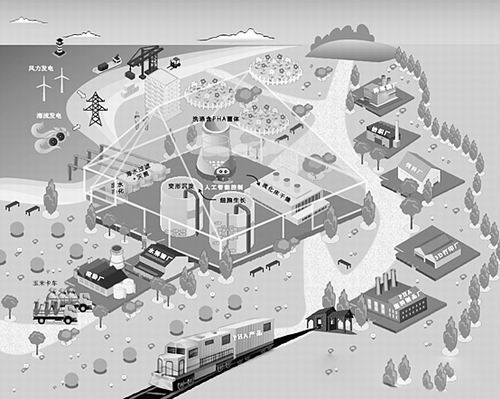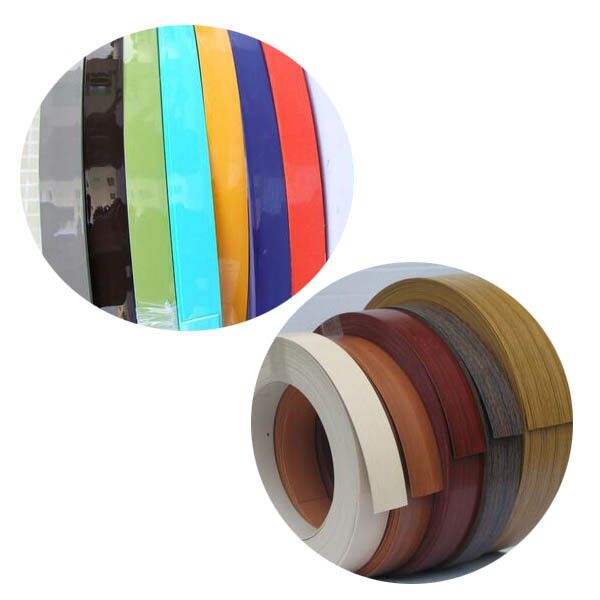
Next Generation Industrial Biotechnology Industrial Tourism Park
Recently, the University of Manchester in the UK released a message saying that researchers at the Institute of Biotechnology of the university are collaborating with a research institution in the United States to discuss the use of synthetic biology technology to produce a new generation of biofuels. The raw materials used are partly from seawater.
The researchers found that Halomonas spp. In seawater can provide an effective "microbial chassis" for the synthesis of high-value compounds. In the future, this new generation of biofuel production method can achieve more economical biofuel scale production through production methods similar to the brewing industry.
For the biofuel industry, this research is a breakthrough. However, an interview with the China Science Daily found that as early as 2006, Chen Guoqiang, a professor in the School of Life Sciences of Tsinghua University, began research work on seawater fermentation, and in 2018 in "Current Opinion in Biotechnology" The journal first proposed the next generation of industrial biotechnology using seawater as a medium, and this study by the University of Manchester is a further extension of this technology.
"This technology reduces the cost of biofuels to the greatest extent, and the prospects are very good." Chen Guoqiang told reporters that the team has overcome many difficulties in the application of next-generation industrial biotechnology, and currently can use seawater as fermentation water to produce biodegradation Plastics, and achieved a small-scale (35 tons scale) industrial application, is now attempting a larger-scale industrialization.
Upgrading of bio-manufacturing technology
Although the chemical industry has made great contributions to modern society, it has also caused many problems such as environmental pollution and greenhouse gas emissions. With the rapid development of molecular biology, biochemistry and synthetic biology, industrial biotechnology that uses biological products such as living organisms, organelles or enzymes to process raw materials in the form of biochemical reactions is considered to be a more effective means.
However, compared with the traditional chemical industry, industrial biotechnology has less damage to the environment, but due to the high cost of the substrate, the cumbersome steps of disinfection and sterilization, and the need to consume a lot of energy and water resources, it does not account for market competition. Advantage. Developing a series of strains that can efficiently and economically produce various products has become an important task nowadays.
To this end, scientists have focused on microorganisms that live in extreme conditions and have special properties, such as halophilic, alkaliphilic, acidophilic, and thermophilic microorganisms. Among them, the halophilic microorganisms taking the genus Halomonas as examples, because they can carry out open and continuous fermentation under the conditions of high salt and alkali, become the research hotspot of industrial biotechnology.
Chen Guoqiang said that the next generation of industrial biotechnology is industrial biomanufacturing technology based on extreme (halophilic microorganism) microbial synthetic biology, mainly aimed at the current stage of biomanufacturing inherent energy consumption, water consumption, complex process operations, and low final product concentration 3. Complicated product purification, incontinuous process, expensive equipment investment, and food competition with people. It partially replaces the chemical industry under the conditions of non-combustible, non-explosive, non-polluting, and low water consumption, providing a large number of materials, fuels, drugs, explosives and other The necessities of food, clothing, shelter and transportation meet human needs.
In his view, China has the world's largest industrial bio-manufacturing industry (with an output value of nearly one trillion yuan) and urgently needs industrial upgrading. The next generation of industrial biotechnology can overcome the shortcomings of existing biomanufacturing, promote the comprehensive upgrading of biomanufacturing in China, and solve the ecological, resource and sustainable development crisis facing us.
The infinite possibilities brought by sea water
Halophilic microorganisms are a general term for microorganisms that require high concentrations of sodium chloride during growth. They usually inhabit high-salt environments or oceans, and Halomonas is one of them. The University of Manchester's research focused on using synthetic biology to make Halomonas grown in seawater into biofuel.
The researchers said that the key to this technological breakthrough is to change the metabolism of microorganisms through genetic recombination technology to create high-quality biofuels used to replace crude oil. This manufacturing method is more efficient and sustainable than the currently used chemical synthesis methods. .
At present, there are still environmental and economic problems in the way of chemical synthesis. Nigel Scuden, director of the Institute of Biotechnology at the University of Manchester, said that an effective biofuel strategy should avoid the use of fresh water and enable large-scale, economical production of fuels derived from microbial hosts. Transforming bacteria to replicate the same process of chemical synthesis can not only greatly increase the sustainability of biofuel manufacturing, limit the production of toxic by-products, but also do not rely on unsustainable resources such as crude oil.
Chen Guoqiang is also very optimistic about the prospect of using seawater to make biofuels, because the halophilic microorganism itself is in a high-salt, high-alkali growth environment, which makes it not easily infected by bacteria, so it does not need to be carried out under sterile conditions. No high temperature and high pressure sterilization is required during the fermentation process, and continuous fermentation can be carried out for a long time, which makes the operation of the process much simpler, and saves energy and reduces costs to a large extent, and improves the market competitiveness of products.
"The fermentation process does not require high-temperature and high-pressure sterilization, so there is no need to use expensive stainless steel fermentation tanks and stainless steel piping systems. Instead, cheap plastic, ceramic, or even cement tanks or pipes are used. The investment in process equipment is also greatly reduced." Chen Guoqiang added Since seawater can be used to replace freshwater, the water produced in the process can be recycled many times, and water saving has become a major advantage.
In addition, using seawater to make biofuels does not compete with people for food. Kirk Malone, director of commercialization at the Institute of Biotechnology at the University of Manchester, said that at present, biofuel production depends on corn, sugar beets and other crops, occupying agricultural land, and using seawater to produce biofuels can reduce the contradiction between fuel and food production to grab resources. The quality of the biofuel produced is basically the same as that of the fuel currently used. Vehicles can be used without modification of the engine and still maintain high performance.
Chen Guoqiang also pointed out that the halophilic bacteria modified by synthetic biology can use starch, protein, fat and even cellulose and fatty acid to grow, these are the composition of food, and even kitchen waste can make halophilic bacteria grow and produce the required product. In addition to not competing with people for food, through molecular manipulation, it can also allow halophilic bacteria to continue to grow under high density, greatly increasing the final concentration of the product; by expressing bacterial isolation and suppression genes, the bacterial morphology changes and self-coagulation can occur. The flocculation effect allows the natural separation of bacterial cells and fermentation broth, and product purification becomes simpler.
Still technical challenges
Regarding halophilic microorganisms, Chen Guoqiang's team also carried out a transformation of synthetic biology, turning this magical microorganism into an efficient bio-manufacturing platform, enabling it to use seawater as a medium for efficient production in a sterilization-free and continuous process The cost of various bioplastics PHA (polyhydroxy fatty acid ester) is one third lower than the previous technology.
According to the reporter, the next-generation industrial biotechnology pilot test for PHA has been completed. PHA synthesized with the pilot production line can be made into biodegradable agricultural mulch, supermarket shopping bags, express delivery and take-away packaging materials, and even PHA is made into yarn, which is then spun into fabric to replace silk.
For the production of biofuels based on halophilic microorganisms in seawater, although the prospects are also very attractive, if there are practical applications, there are still technical obstacles to the feasibility. Chen Guoqiang told reporters that it is more difficult to transform synthetic biology of halophilic microorganisms. The most difficult technical problem to be solved at present is to build efficient fuel synthesis pathways in halophilic microorganisms.
Chen Guoqiang said that due to the robustness of halophilic bacteria, the fermentation process can also be kept consistent, which simplifies the development of the process. The direction of future technological research and development will focus on the production of multiple products using one strain. He said that in the future, the next generation of industrial biotechnology will enable the country to produce large quantities of various materials, fuels, medicines, explosives, and other necessities such as food, clothing, housing, transportation, etc. in a difficult situation (such as war) to meet social needs. (â– Reporter Li Huiyu)
PVC Edge is the material that protects, decorates, beautifies to the section of furniture plank material, it can make a furniture show the integral effect that wood grain is clear, colour profusion.PVC Edge has many advantages,it`s very light,it is made of plastic, which is easy to process.In addition to this,PVC Edge is of high quality and low price.
The main function of the PVC Edge is a section of sheet enclosed, from environmental and use of adverse factors in the process of damage to the plate and block plank interior formaldehyde volatilizes, at the same time to achieve the effect of beautiful decoration.Luli Group Co,. LTD can produce large quantities of high quality PVC Edge every year and export them to many countries.
The details of PVC Edge
1.Material:PVC
2.Wood grain:new style
3.Surface:polished,matt finish
4.Certificate:ISO9001

PVC Edge
PVC Edge,PVC Edge Banding,Molding Pvc Edge,PVC Furniture Edge
Luli Group Co.,Ltd. , https://www.plywoods.nl
